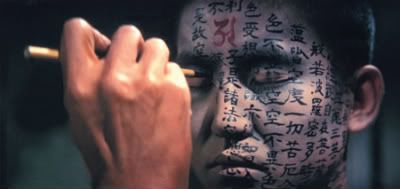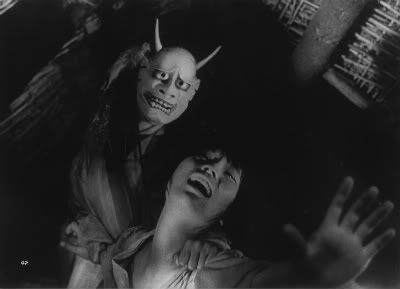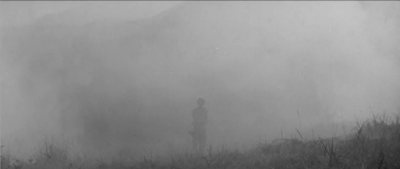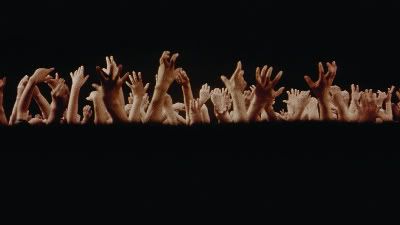
Ashura/Demigod Realm is represented by Kihachi Okamoto's bloody samurai epic Sword of Doom (1966). Ashura is filled with jealousy, struggle and combat stemming from being envious of Deva Realm. As Tatsuya Nakadai's merciless swordman hacks away in a violent purgatory, the film is a perfect match.

Masaki Kobayashi's stunning 1965 Cannes Palm d'Or winner Kwaidan is Manusya: the Human Realm plagued by passion, desire, doubt and pride.

Tiryag-yoni a.k.a. Animal Realm is reflected in Onibaba (1964, dir. Kaneto Shindo), a gritty tale of survival and animal lust in feudal era Japan.

Kon Ichikawa's anti-war masterpiece Fires on the Plane (1959) represents Preta: Hungry Ghost Realm. Perhaps the most fitting one for its respective plane- the marooned Japanese soldiers in the Philippines walk the plain like zombies, slowly dying of starvation and resorting to cannibalism, looking for the salvation in something as insignificant as a distant bonfire.

Jigoku (1960), a theatrical, surreal depiction of Hell by the father of Japanese horror Nobuo Nakagawa is Naraka, a rebirth based on strong states of hatred cultivated in previous lives.
It's a rare opportunity to see these classic Japanese films on the big screen. This is an event not to be missed!
The Japan Society's Zen & Its Opposite: Essential (& Turbulent) Japanese Art House kicks off with Kwaidan on October 15th at 7:30 PM, and continues through February 18th, 2011. For tickets and more information please visit Japan society
No comments:
Post a Comment